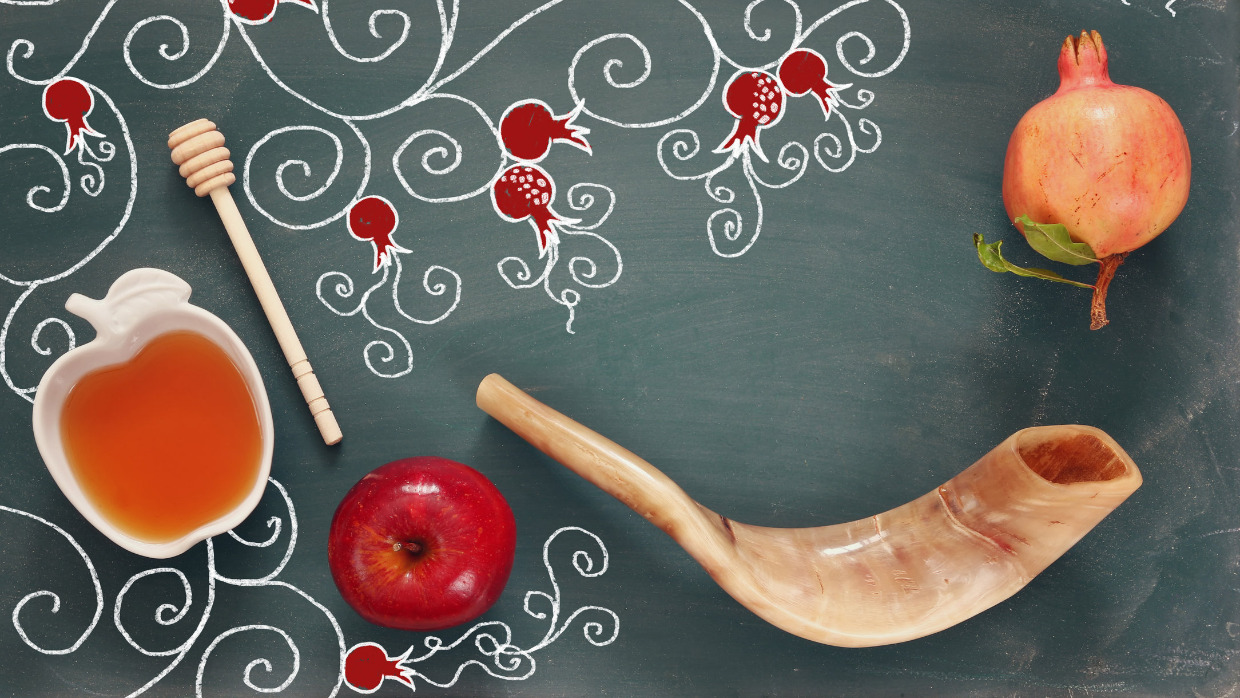 Vampire Weekend's Surprising Jewish Stories
Vampire Weekend's Surprising Jewish Stories


5 min read
Rosh Hashanah is one of the most widely celebrated Jewish holidays. Learn more about the its significance and how to celebrate it.
Rosh Hashanah is the Jewish New Year. It translates to “Head of the Year” and commemorates the creation of the world and the first man and woman, Adam and Eve.
This holiday goes by other names: Yom Hazikaron (Day of Remembrance) and Yom Hadin (Day of Judgment) when we pray, and Yom Teruah (Day of Shofar Blowing) in the Torah.
Rosh Hashanah kicks off the High Holidays; Yom Kippur follows it. This time is called Yamim Noraim – the Days of Awe – as well as the 10 Days of Repentance. As the first days of the Jewish year, Rosh Hashanah, Yom Kippur, and the days in between them set the tone for the rest of the year. By committing to realistic New Year’s resolutions, we commit to becoming better people and living a life we can be proud of in the coming year.
On the Hebrew calendar, Rosh Hashanah falls out on Tishrei 1 and 2, the first month of the year, and it begins on the evening of Tishrei 1 and last for two days. On the Jewish calendar, the days start at night.
Rosh Hashanah is always in the Fall, usually sometime in September. In 2023, Rosh Hashanah starts the evening of Friday, September 15 and ends the evening of Sunday, September 17.
The month before Rosh Hashanah is called Elul. It’s a time of introspection as well as praying for forgiveness. In Jewish literature it’s referred as the time “the King is in the field,” when God is closer and more accessible, and it’s an opportune period to reach out to Him. Sephardic Jews will start saying “selichot,” these prayers for forgiveness, when Elul begins, while Ashkenazi Jews start saying them the week before Rosh Hashanah begins. The prayers are recited early in the morning. Additionally, during the month, the shofar – the ram’s horn – is sounded every morning, except for Shabbat. Selichot prayers are not recited on Shabbat, either.
It’s required to hear the blowing of the shofar as part of your Rosh Hashanah celebration on each morning of the holiday. If the first day falls out on Shabbat, then we only hear it the second day. The shofar is blown after Torah reading and then again after the Mussaf prayer service. Typically, you need to attend services to hear the shofar at synagogue, but someone can blow it for you at home if you cannot make it to services.
The shofar is significant for a number of reasons. It’s made out of a ram’s horn because when Abraham took Isaac as a sacrifice, a ram appeared and was sacrificed instead. Additionally, a shofar was blown when we received the Torah on Mount Sinai, and it signifies a cry and a call to return to God.
Tashlich, which comes from the Hebrew word “to cast”, involves going to a body of water to “cast off” our sins for the New Year. It typically falls out on the first day of Rosh Hashanah, but will be pushed off if it’s Shabbat.
You can do tashlich at any point during the 10 Days of Repentance unless it’s Shabbat. During it, you say special prayers next to a body of water; some people throw bread into it as well. Many synagogues organize tashlich gatherings, but you can also do it alone.
Rosh Hashanah prayer services are longer than prayers on a typical Shabbat morning. The prayer book is not the one we typically use; instead, we pray from the machzor. The Torah reading for the first day details the story of Abraham and Sarah miraculously having Isaac when they were in their 90s, and the second day Torah reading is about the binding of Isaac and the ram that appeared instead.
When you greet people on Rosh Hashanah, you’ll say, “Shanah tova” which translates to “Good year,” or you can say “Shanah tova u’metuka,” which means sweet, which means “Have a sweet New Year.”
Both nights, women light candles and say blessings to commemorate the holiday. No creative work is allowed, but if Rosh Hashanah falls out on a day that’s not Shabbat, then cooking is allowed (ask a rabbi how cooking can be done – there are special rules). If it’s Shabbat, all the same rules apply.
After candle lighting and prayers, we sit down for our festival meals and enjoy the simanim, the auspicious foods we eat on Rosh Hashanah that symbolize various blessings. We say a special prayer on these foods, and some foods differ depending on Ashkenazi and Sephardic customs.
The simanim include:
Click here for recipes that incorporate the simanim. .
Rosh Hashanah is an incredibly spiritual time of year. By looking inward and following tradition, you can deepen your connection to God and start the New Year off on a spiritual high, ready to conquer everything that lies ahead.
